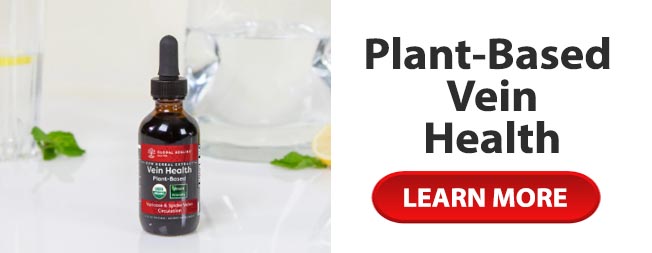Hemorrhoids are areas in a vein located in or around the rectum in which one way valves have been damaged and allow the blood to pool. This stagnation of the blood supply causes the veins to swell and become inflamed, reduces the amount of toxins and wastes that can be removed from the area, and causes itchiness and pain. Most of these hemorrhoids can be treated with some simple changes to the diet and bowel habits. They do not usually require surgery or other invasive treatments unless they become very large and painful. (1)
The first treatment recommendations will be to make changes to your diet that will make the stool softer and easier to pass. These recommendations include increasing the amount of fiber in the diet through fruits, vegetables and whole grains or taking a fiber supplement. If you can\’t get enough fiber from your diet and decide to use fiber supplements, it is very important to drink at least 8 glasses of water each day or the stool could get harder and more difficult to pass. This is because the fiber works to draw more water into the stool, making it bulkier and softer. Without water, the resulting stool is more compact, hard and difficult to pass.
It is also important not to strain while having a bowel movement. Straining occurs when you hold your breath while pushing. This causes an increase in pressure in the veins in and around the anus, which increases the risk of developing hemorrhoids or worsening the symptoms of those which you already have. Instead, learn to breath through pushing out stool and work to soften the consistency, which will decrease the work required to have a bowel movement.
People who exercise consistently have an easier time with their bowel movements because exercise helps the intestinal tract to move more consistently. Doctors can also recommend over the counter creams and ointments that can help to reduce mild discomfort. These products contain ingredients like witch hazel or hydrocortisone that help to reduce pain, swelling and itching. However, you shouldn\’t use these over the counter preparations without first talking with your primary care physician to be sure they don\’t interfere with any underlying medical condition and to determine the length of time you should take the medication.
If other treatment protocols should be considered, the physician may start with a nonsurgical procedure, called a fixative procedure. These are designed to reduce the blood supply to the hemorrhoid so it shrinks or goes away. Scar tissue will remain that has the function of supporting the surrounding tissue and preventing any further hemorrhoids from developing in the area.
Fixative procedures include tying off the hemorrhoid with a rubber band or coagulation using heat, laser or electrical current. Using the rubber band ligation, the doctor places one or two tiny rubber bands around the base of the internal hemorrhoid to cut off the circulation. The hemorrhoid falls off within a few days. It can be uncomfortable and can cause bleeding which is usually rarely severe.
The coagulation procedures – infrared, laser or bipolar – are techniques that cause small, bleeding, internal hemorrhoids to harden and shrivel. While it is quicker and less painful than the rubber band procedure it has a higher incidence of recurrence, or the hemorrhoid coming back. Another procedure which may be considered, sclerotherapy, is also used on varicose veins or spider veins in other areas of the body. It causes little pain but is usually less effective than the rubber band ligation.
Two other surgical treatments are possible for those who suffer from hemorrhoids – the hemorrhoidectomy and stapling. In a hemorrhoidectomy the surgeon removes most of the excess tissue that causes the bleeding. There are several variations that can be used based on the particular situation and overall health of the individual. The surgery can be done with a local anesthesia or combined with sedation and spinal or general anesthesia. This is the most effective and complete way of removing hemorrhoid tissue. Unfortunately, it also has the highest rate of complications which can include difficulty emptying the bladder or urinary tract infections. Many people also experience pain that can be controlled with medication and warm baths.
Stapling is a procedure that blocks the blood flow to the hemorrhoidal tissue and generally results in less pain than a hemorrhoidectomy. Stapling is associated with a greater risk of recurrence and rectal prolapse.
Before deciding on any procedure to treat your hemorrhoids it is important that you do your own research and talk with your physician and surgeon about the side effects, complications and long-term results. Only after weighing the pros and cons and evaluating those against your current health, lifestyle choices and severity of disease can you make a choice about treatment protocols.
(1) National Digestive Diseases Information Clearinghouse: Hemorrhoids

